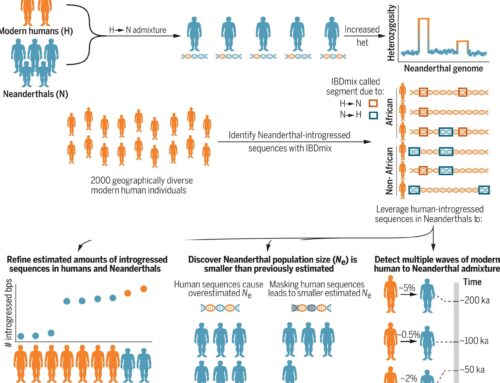Work challenges popular idea that breeds have specific, reliable behaviors
When Kathleen Morrill was 12, she decided she needed a puppy. Not just any puppy—a pint-size papillon with a black button nose and bushy, perky ears. When her parents resisted, “I turned on the waterworks,” laughs Morrill, now a graduate student at the University of Massachusetts, Worcester. And so, the family ended up with its first dog—a 2-month-old pup she named Tod.
Tod was registered with the American Kennel Club (AKC), whose website describes his breed as “curious” and “friendly” with a “hardy constitution.” But the puppy was shy and scared of strangers, and he developed separation anxiety as he aged. When Morrill’s family got another papillon, Rosie, a year later, she was entirely different: bold, outgoing, and adoring of all people. “Breed can be important,” Morrill says, “but it’s not the full picture of a dog’s behavior.”
Now, she has the science to back that up. In a new study, Morrill and her colleagues show that almost none of the behaviors we associate with dog breeds—from lovable Labradors to pugnacious pit bulls—are hard-wired. Aside from a few ancient traits, environment seems to play a much larger role than pedigree.
“It’s a major advance in how we think about dog behavior,” says Elaine Ostrander, an expert in canine genetics at the U.S. National Human Genome Research Institute who was not involved with the work. “No breed owns any particular trait.”
Morrill wanted to better understand whether behavioral issues such as aggression and obsessive compulsive disorder in dogs are genetic or environmental. “If they are more prominent in particular breeds,” she says, “that hints they may be genetic.”
Previous work had found some genetic relationships between breed and behavior, but it looked at averages across breeds rather than comparing individual dogs. So Morrill and her colleagues harnessed her lab’s own database, Darwin’s Ark, which has collected survey and genetic data on thousands of dogs across the United States since 2015. Owners answer more than 100 questions—ranging from how friendly their pups are with strangers to whether they like to chase squirrels—and then send in a cheek swab for DNA sequencing.
When it came to physical traits, such as size and floppy ears, genes ruled. At least 80% of a dog’s appearance can be tied to its DNA, the team found.
Behavior was another story. Less than one-quarter of the differences in personality from dog to dog could be explained by genetics. Some behaviors, like retrieving objects and human sociability, were more heritable. The researchers speculate that retrieving may have helped dogs’ wolf ancestors hunt, and that humans likely selected for friendly pooches in the early days of dog domestication.
But most behaviors did not have a strong genetic component, including playfulness around other dogs and (yes, it was in the survey) whether a dog circles before it defecates. “That probably has a lot more to do with where you take your dog to poop,” says Elinor Karlsson, director of vertebrate genomics at the Broad Institute, who oversaw the study.
And when it came to dog breeds, personality varied widely within the same pedigree. Labradors could be loving or standoffish. German shepherds, easy to train—or impossibly headstrong. Just 9%, on average, of the personality differences between pups were related to their breed, the team reports today in Science.
Some breeds even defied their stereotypes. Pit bulls, for example, (though not an official AKC breed) were not more aggressive than other dogs, despite their reputation in some quarters as dangerous. The results, Karlsson says, “match what the dog world has told us”—that the behavior of these animals is shaped by their environment, not their breed.
The bottom line, she says: If you’re looking for a dog with a specific personality, “you shouldn’t shop out of a catalog. Each dog is an individual.” (A website the team set up shows just how hard it is to know what you might get.)
Personalities aside, most breeds do have a distinct look—probably because breeding for appearance is much easier than breeding for behavior, says Adam Boyko, an expert on canine genetics at Cornell University who was not involved with the work. Breeding for behavior could also have drawbacks, he says. “Anything that changes a brain pattern that much is probably going to have negative effects in other areas.”
Still, after decades of treating, showing, and judging countless breeds, AKC’s chief veterinary officer, Jerry Klein, disputes the study’s conclusions. “I think most dogs conform to the personality standard of their breed,” he says. Purportedly older breeds, he says, such as Tibetan mastiffs and basenjis—few of which were enrolled in the study—may have more hardwired personalities because they’ve been around longer.
Klein also contends that if the researchers look beyond breed to classes of dogs—such as sporting dogs (which include a variety of spaniels) and scent hounds (such as basset hounds and beagles)—they would find their behaviors are more similar to each other than they are to other dogs. “It’s not as simple as just the breeds.”
If nothing else, Morrill hopes the work will unlock fresh insights into doggo personality. The team found 11 new DNA regions tied to behavior, including one for howling and another for sociability; in humans, these regions are related to language and long-term memory, respectively. Those might one day help scientists treat neurological conditions in both pups and people, she says.
Tod died a few months ago, just shy of his 15th birthday. He became more confident as he got older, something Morrill credits to Rosie’s reassuring presence. His personality wasn’t tied to his breed—and it also wasn’t fixed, she says. “Dogs, like people, can change over time.”



